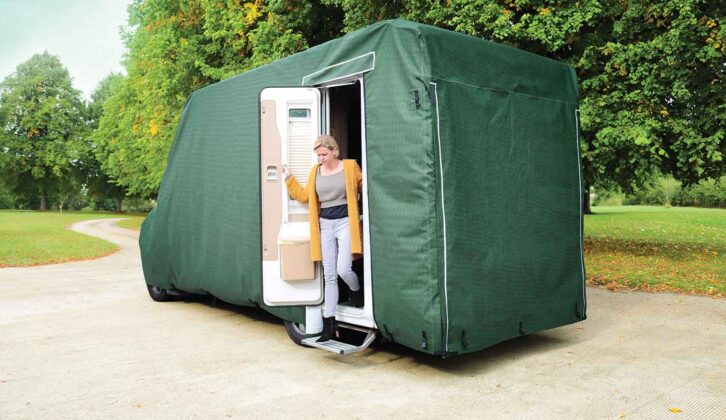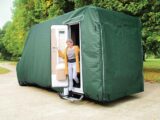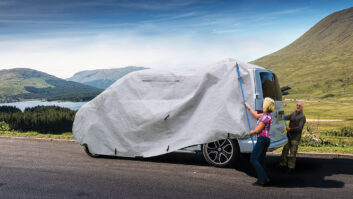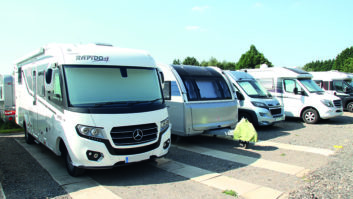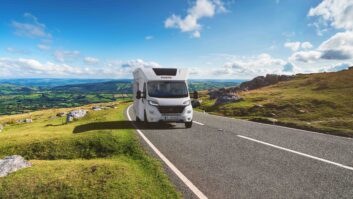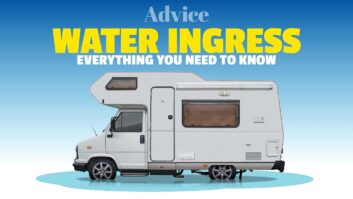It’s time for some motorhomers to begin the process of putting their beloved vehicle into hibernation for the winter months. If you’re one of them, and are looking for a helping hand with winterising a motorhome properly, we’re here to help.
Following some simple steps will mean that come spring, when you’re ready to set off on your first tour of the season and stay at one of the best motorhome sites, your ‘van will be ready to go. From the essential cleaning tasks to carry out to the motorhome security steps to follow, we’re here to talk you through what you need to know.
Practical Motorhome is supported by its audience. When you purchase through links on our site, we may earn an affiliate commission. Learn more.
Protect your motorhome with a cover
Once your motorhome is spotlessly clean (check our guide on motorhome cleaning for advice on this), investing in a good-quality cover will be an important step in winterising a motorhome, helping to protect it from the worst of the weather.
The best motorhome covers will provide a good fit and be made of the right materials – cheap, low-quality options can do more harm than good.
This is because abrasive materials that constantly flap against the ’van’s sidewalls in the wind can permanently damage the all-important panel finish.
The best options are custom-made covers from the likes of Specialised Covers or Protec. These are designed to fit the precise dimensions of each vehicle and have durable waterproof exteriors. They also have soft-touch linings, and breathable materials that will allow moisture to escape.
Costing around £300-£600, these are not cheap accessories, so if you are on a limited budget, another option is a universal-fit cover, for around £150. The best of these, fitted correctly, can still offer good all-round protection.
We talk you through the process of how to fit a full-size motorhome cover if you’re wondering how to fit yours.
Tyre maintenance
Rubber compounds deteriorate when they are exposed to sunlight and strong artificial light with a high UV content. This is because the protective waxes in the rubber dry out, leaving the surface vulnerable to degradation.
Rarely used tyres, stored outside, are particularly vulnerable, and the damage manifests itself as fine crazing and deeper cracks.
I treat my tyres with Meguiar’s Endurance Tyre Gel. This not only makes them look great, it will also help protect against UV damage and browning – and, in theory, should keep the tyres in better condition.
When you are checking your motorhome tyres, have a look at the production date, which is printed on the sidewall.
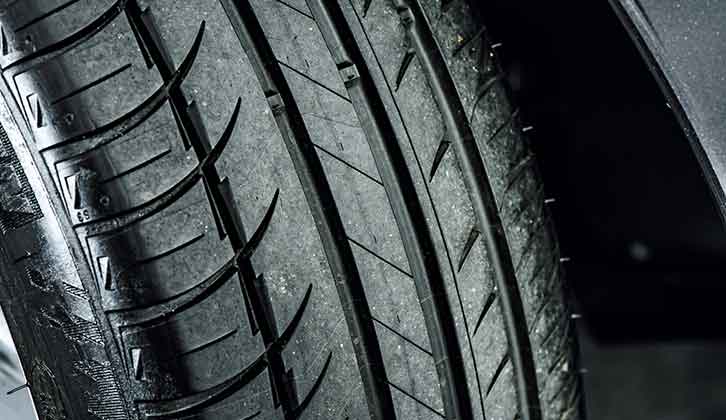
It’s a four-digit number, usually in a lozenge. For example, ‘1219’ means a tyre made in the 12th week of 2019.
By applying the major touring Clubs’ guidelines of replacing rubber at five years old, this tyre has less than a year of advisable use left. You could leave it on over the winter, but be prepared to replace it before you tour next year.
If your tyre is in excellent condition, with no wear, cracks or damage, and plenty of tread depth, the Clubs suggest seven years as a maximum lifespan. Seek the advice of your dealership about this the next time that you have your vehicle serviced.
Finally, check your motorhome tyre pressures when you park up, as underinflated tyres left for extended periods can cause flat spots, which will increase vibrations when you are on the road.
Clean up the interior
Another important step when you’re winterising a motorhome will be cleaning the interior of your ‘van. Wipe down all of the kitchen surfaces and clean the interior of the fridge with disinfectant wipes or a spray.
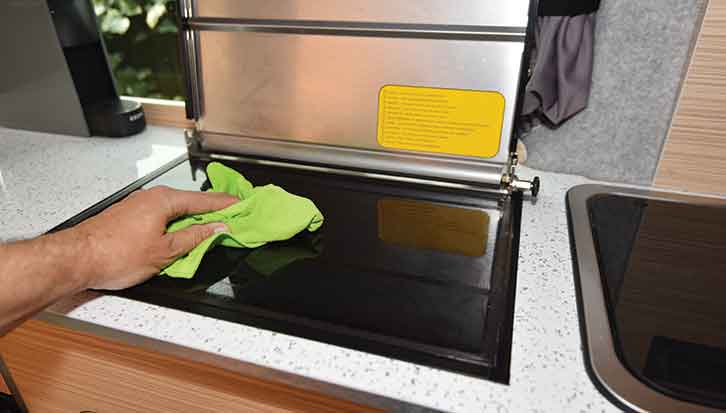
Make a special effort here to clean or vacuum up any crumbs and food debris, because such remnants can attract mice and other unwelcome visitors. Having one of the best motorhome vacuum cleaners can help to make this an easier task.
Rodents have been known to cause significant damage to ‘vans, especially by nibbling through electric cables, water pipes or upholstery.
If you store your ’van on a farm, this can be a particular problem, so make every effort to seal up cable access holes in the bottom of the vehicle.
Mice can get through tiny holes the same diameter as a pencil, and have even been known to chew through the plastic mesh that covers the gas drop-out vents. This may be the case, but definitely avoid sealing these with tape, because you want air circulating through the stored vehicle.
Always try to avoid parking on long grass or anything that could make mouse access to your ’van easier.
Next, thoroughly wash down the shower and handbasin, ensuring all the water drains away, and empty the waste- and fresh-water tanks. Don’t forget to empty the boiler, too.
Remember to remove any hair from plugs and pipes, especially if you have long-haired family members. This might require the (gentle) use of a plunger!
Clean the toilet, but avoid coating the bowl with strong chemical cleaners and leaving them in place, because this could damage or discolour the surface if left for many months, especially if the bowl is plastic.
Toilet cassette maintenance
Having cleaned the cassette and prepped it with some toilet chemical solution, consider lubricating the slide valve to keep it in tip-top condition.
This is a simple job involving a quick spray or rub with silicone lubricant – some motorhomers even use olive oil. I give the slide-out handle mechanism a quick blast as well. This is also a good moment to give the unit a check over.
Where to park your ‘van
If at all possible, avoid parking your motorhome under trees: they will invariably deposit sap onto the roof and increase the chance of corrosive bird droppings landing on it, too.
That’s before you even start to consider the potential damage from falling branches in a winter storm.
Always aim to park your vehicle on a dry, well-drained, hard surface.
Keeping your ‘van safe
Alarms and trackers don’t consume massive amounts of leisure battery charge, but your battery will need topping up every so often.
At home, you might be able to leave a trickle-charger attached. Models such as Ctek’s MXS 5.0 have built-in software to manage your battery charge, thereby extending the life of the leisure battery.
Alternatively, you could fit a solar panel, which should keep your battery topped up, even in winter weather.
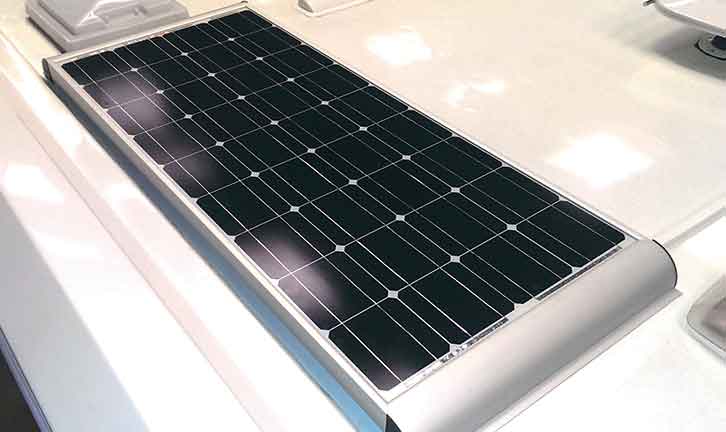
Remember, if you have a cover made, you should specify a clear window section that will sit over the panel, allowing it to charge even with the cover fitted. With no cover fitted, make sure that you keep the panel free from grime, corrosive bird lime and tree sap, because these will lower its charging potential.
It seems like basic common sense to fit a full arsenal of security devices, such as a motorhome wheel clamp, when storing your vehicle. You might also find that your insurance is invalidated if you do not have certain security devices fitted.
Ideally, you should start the engine every month and allow it to run at idle for a couple of minutes. Move the ’van slightly while you’re there, so that the tyres do not develop flat spots.
Don’t forget the fridge
Clean your fridge’s interior thoroughly, dry it and leave the door ajar to allow air to circulate. This will prevent the build-up of odours. Many fridges have a catch to hold the door open.
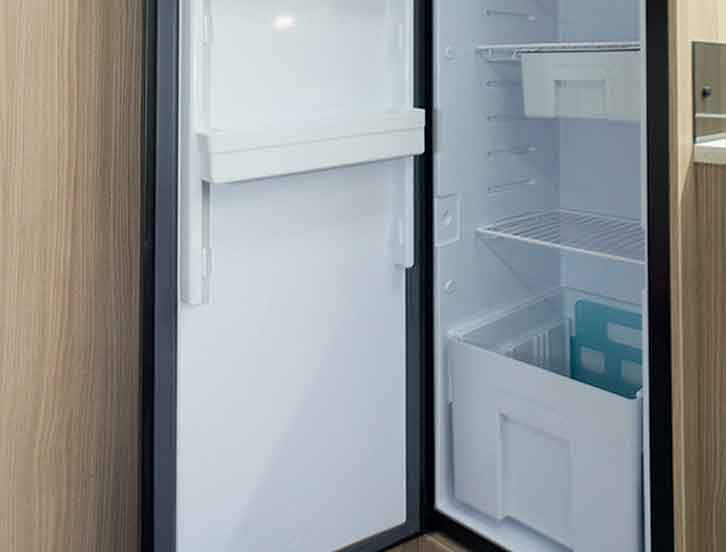
Some people also maintain that you can prevent bad odours accumulating in your fridge by leaving a small dish of sodium bicarbonate inside it.
Soft furnishings
If at all possible, it’s best to remove some or all of your ’van upholstery when you’re winterising a motorhome – you can then store it in your house, which is heated.
Not only will doing this keep the soft furnishings in better condition, it’s also a deterrent to thieves – remember that stolen motorhome settee cushions can cost you a fortune to replace.
Some people close the silver-backed blinds when not using their vehicle, but it’s perhaps better not to.
Potential thieves won’t be able to see that there are no valuable contents inside the ’van, and reflective blinds will repel all of the sun’s heat, keeping the interior cooler – and quite possibly, damper. Blind mechanisms can also become damaged if left in the ‘closed’ position for long periods.
Staying dry
Some people swear by moisture traps to keep their motorhome’s interior drier. These contain moisture-absorbing crystals and are fairly cheap. Those living in wetter areas of the country might find them beneficial and there are some suggestions in our best motorhome dehumidifier guide if you’re looking for some ideas.
Remember your keys!
At the end of the touring season, make sure you have all your keys and remotes in a safe place, away from the vehicle.
These might include the motorhome keys, security lock keys, the locking wheel-nut adaptor, bike-rack keys, the remote controls for your TV and air-con, and more. A clearly marked plastic storage box is ideal, and should be kept somewhere accessible but secure, away from the motorhome.
While you’re doing this, make a note of your key numbers, in case you ever need replacements, and you could also remove batteries from remote controls.
And finally…
- Turn off your gas bottles and consider removing them from the motorhome. Gas bottles are very valuable!
- Ensure that all of the windows and rooflights are securely closed.
- Using the supplied thin nozzle tube, put a squirt of WD40 into each of the motorhome’s lock mechanisms and work the key in and out.
- Treat all seams of sealant with great care while you are cleaning the ’van.
- Remove any valuables.
Looking for some inspiration for what to buy the motorhomer in your life for Christmas this year? Then take a look at our suggestions for gifts for motorhome owners.
Future Publishing Limited, the publisher of Practical Motorhome, provides the information in this article in good faith and makes no representation as to its completeness or accuracy. Individuals carrying out the instructions do so at their own risk and must exercise their independent judgement in determining the appropriateness of the advice to their circumstances. Individuals should take appropriate safety precautions and be aware of the risk of electrocution when dealing with electrical products. To the fullest extent permitted by law, neither Future nor its employees or agents shall have any liability in connection with the use of this information. Double check any warranty is not affected before proceeding.
If you’ve enjoyed reading this article, why not get the latest news, reviews and features delivered direct to your door or inbox every month. Take advantage of our brilliant Practical Motorhome magazine SUBSCRIBERS’ OFFER and SIGN UP TO OUR NEWSLETTER for regular weekly updates on all things motorhome related.
